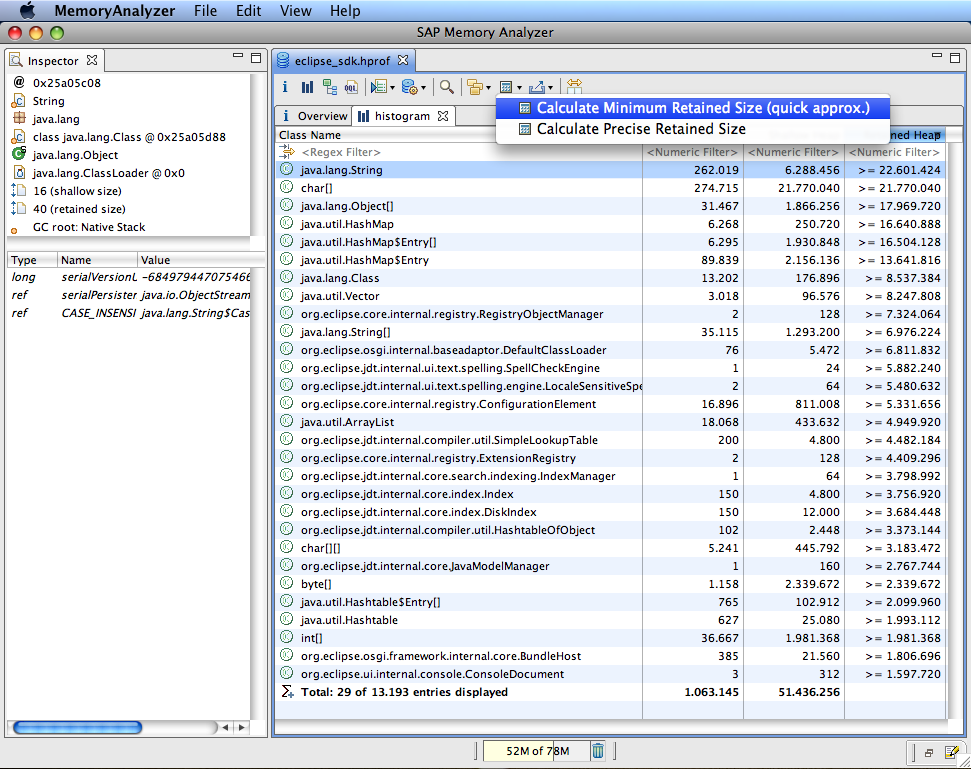


These suspects provide you the overview of the leak.User needs to drill down further to find the root cause.Ī) Open histogram and sort the classes by retained heap.ī) Objects having large retained heap are suspect.Ĭ) Right click on these object and select list object by incoming reference.Į) Expand the tree and find the objects with more retained heap and less shallow heap.į) These objects are the culprit should be freed during the GC.Ī) Open dominator tree and group objects by class/package to narrow down search on a class/package.ī) Expand dominator tree to find out the objects having large retained heap and percentage of acquired memory.Ĭ) Right click on these objects and go to path to GC rootĭ) Find out which objects are holding reference to these objectsĮ) These objects are the culprit which are holding unnecessary references.įrom overview select the duplicate classes which were loaded by multiple class loaders.If the same is class is loaded multiple time, it will have more memory allocated to it. MAT may give you suspect which is taking more memory on application. It’s very difficult to analyse memory of the application.Eclipse MAT tool is very useful to analyse heap dump to find memory leaks.Eclipse MAT tool is explained in following articles.īefore proceeding to analyse heap dump user should have knowledge of memory leak, heap dump, Shallow vs retained heap and dominatore tree.ġ : Check the memory graph for continuous increme.nt during the load test.Ģ : Acquire Heap dump by using various methods.ģ: Open heap dump in MAT and Run leak suspect report to find out the leak suspects.

If the application is complex and running for long time,it may contain large set of objects and references.


 0 kommentar(er)
0 kommentar(er)
